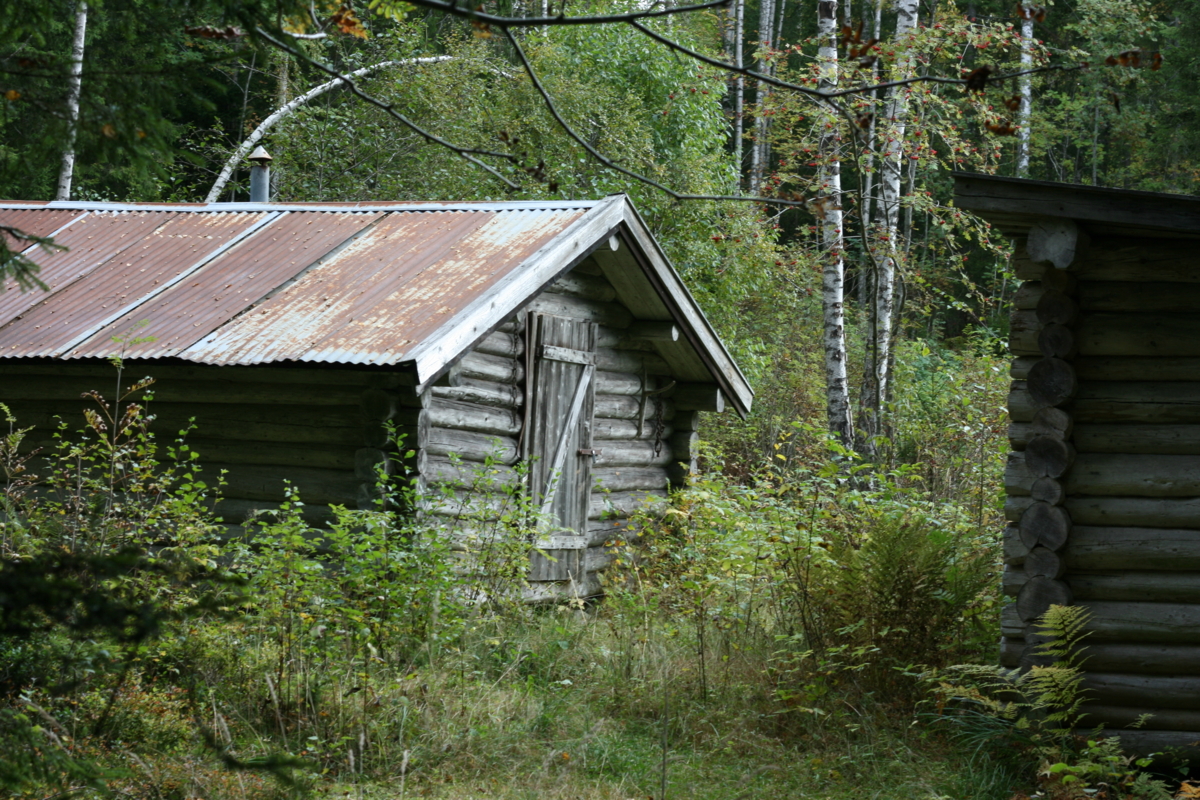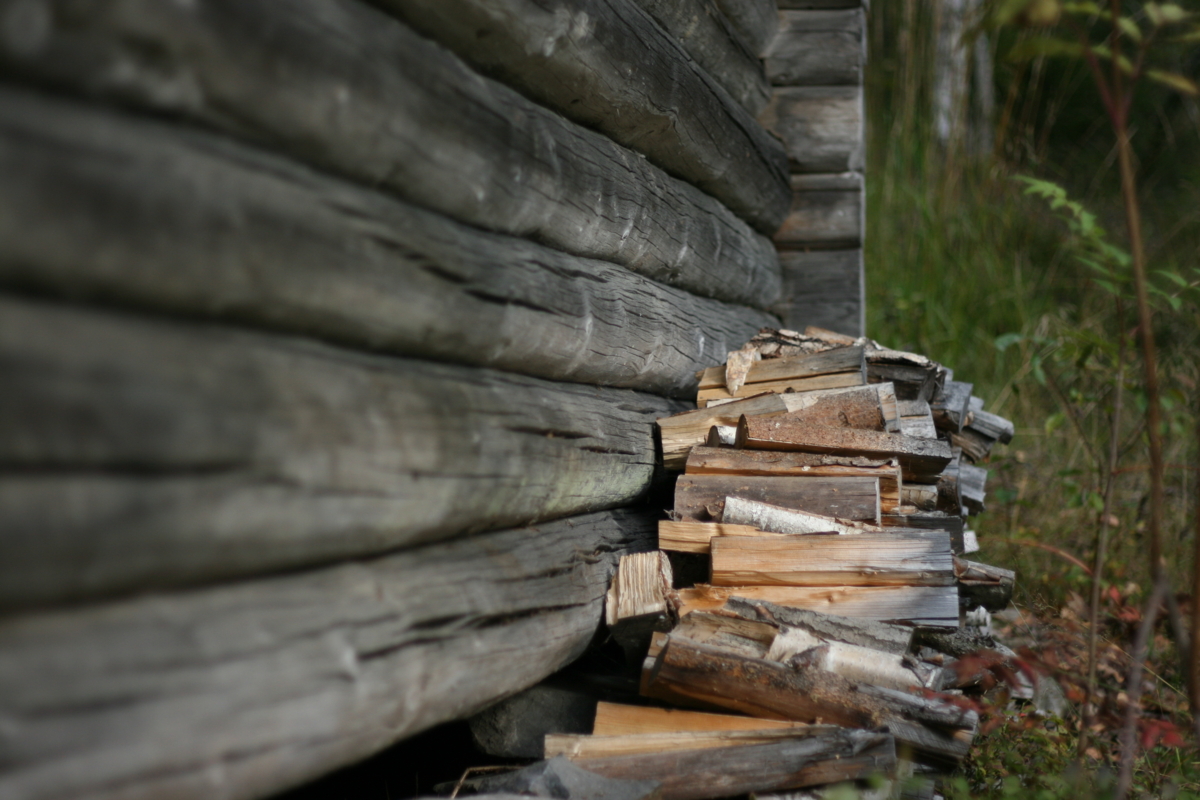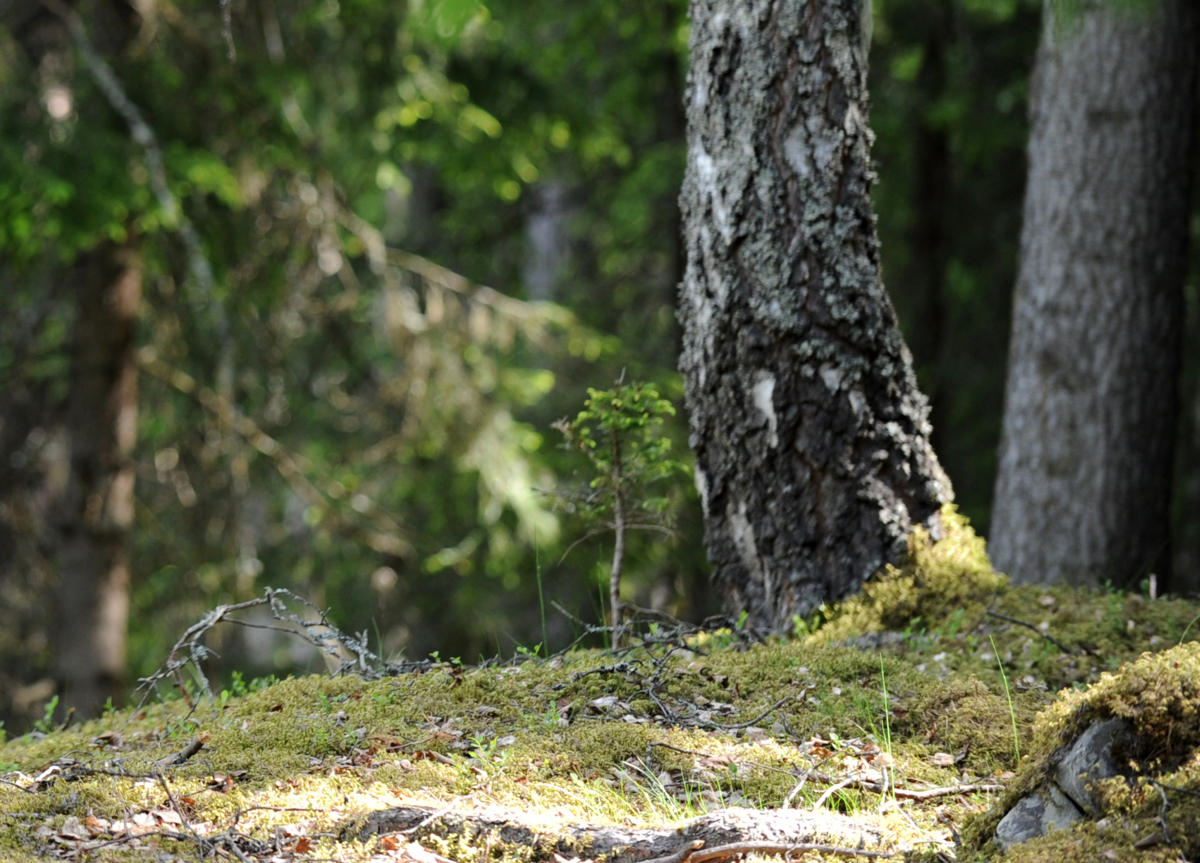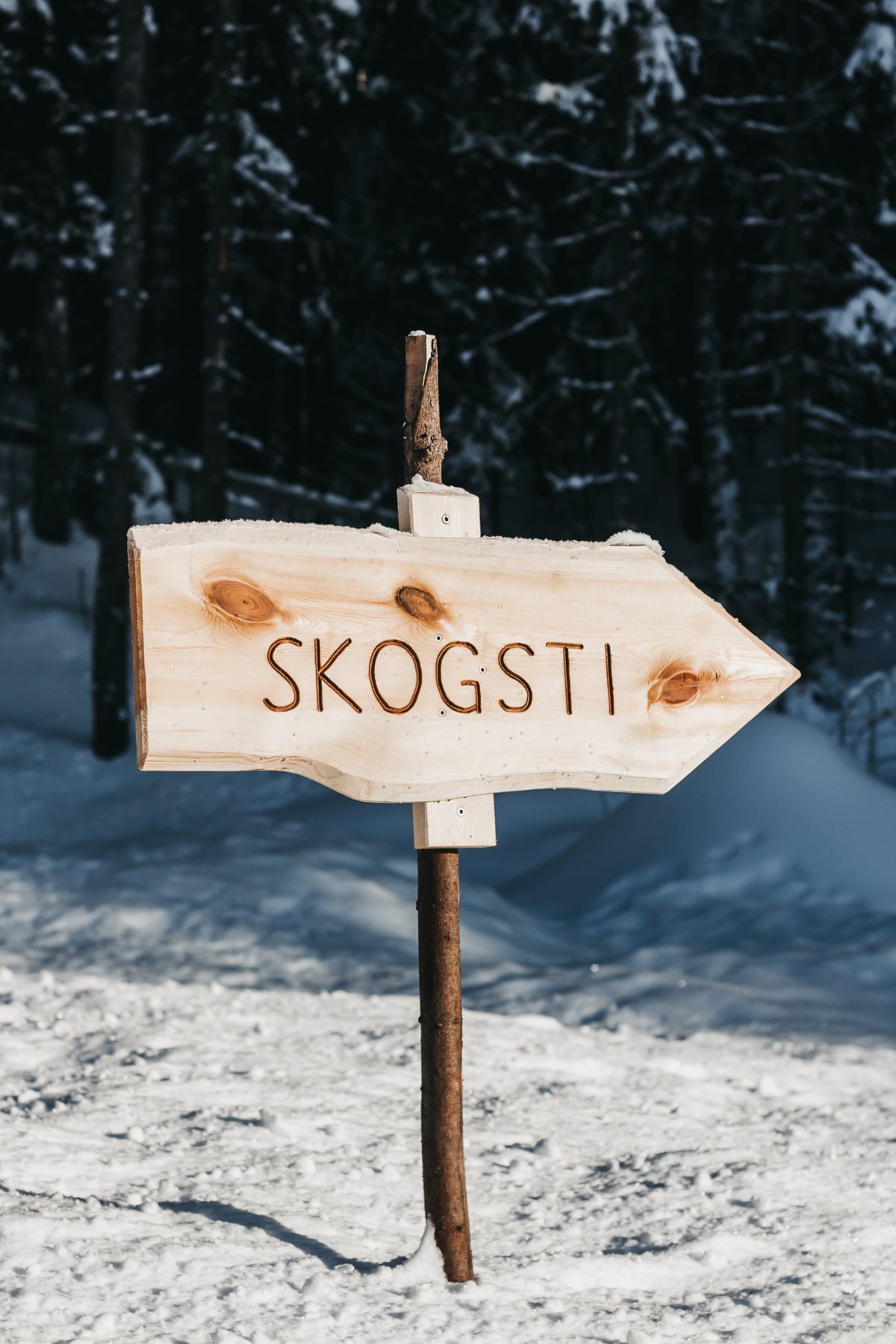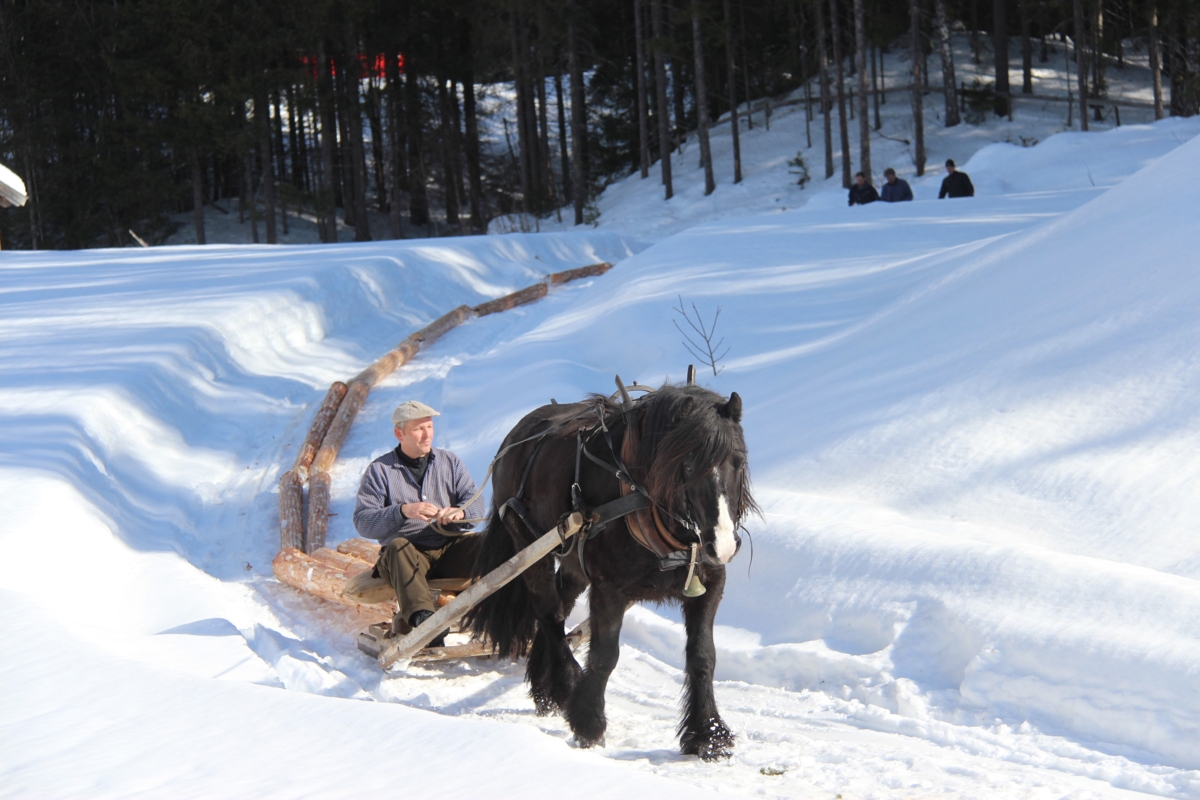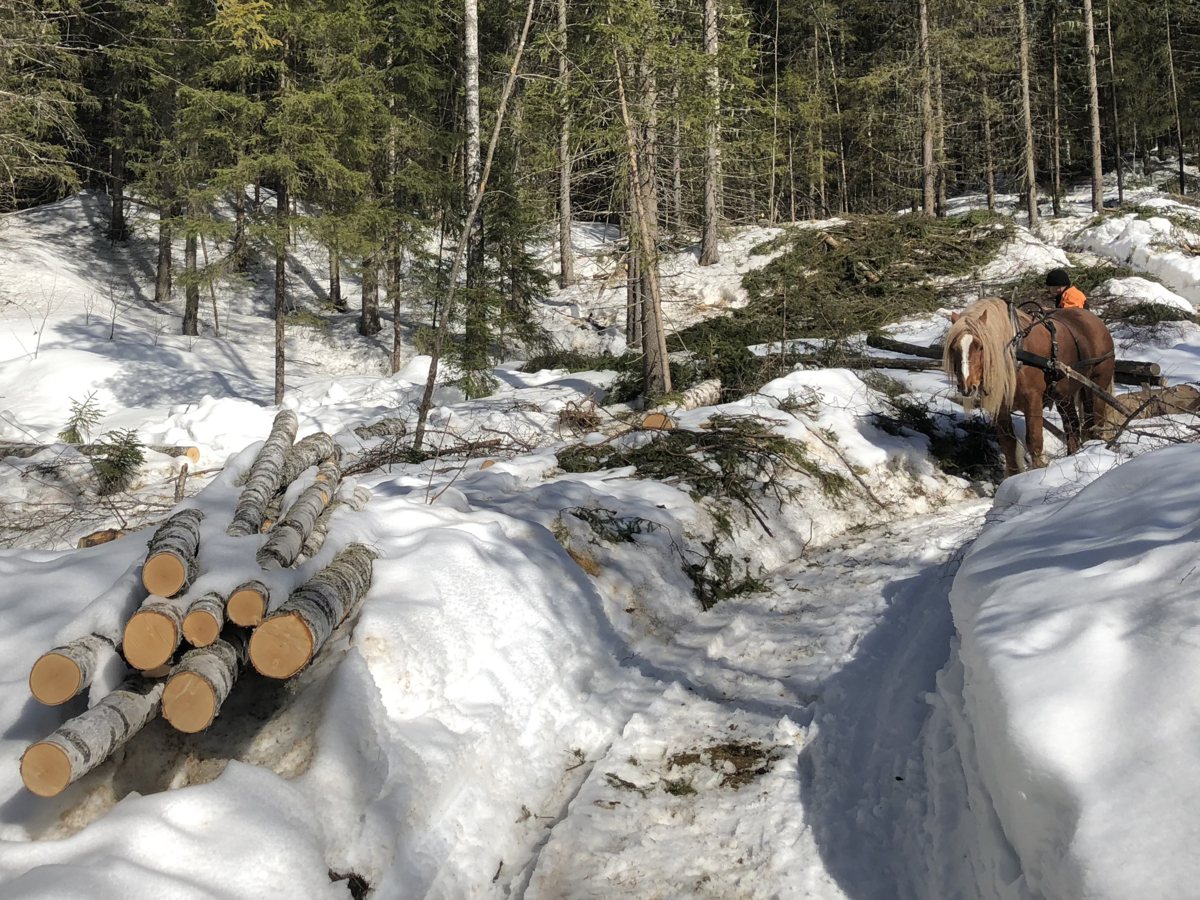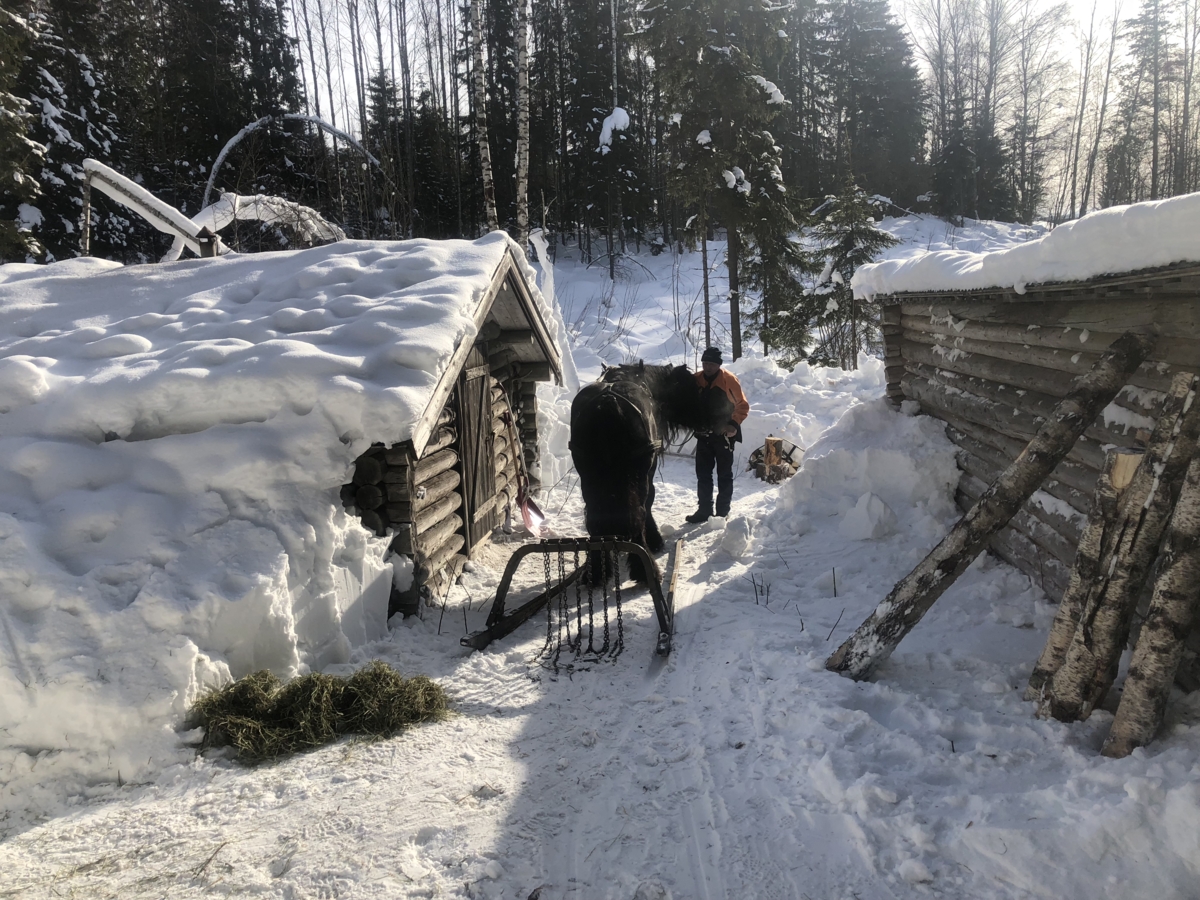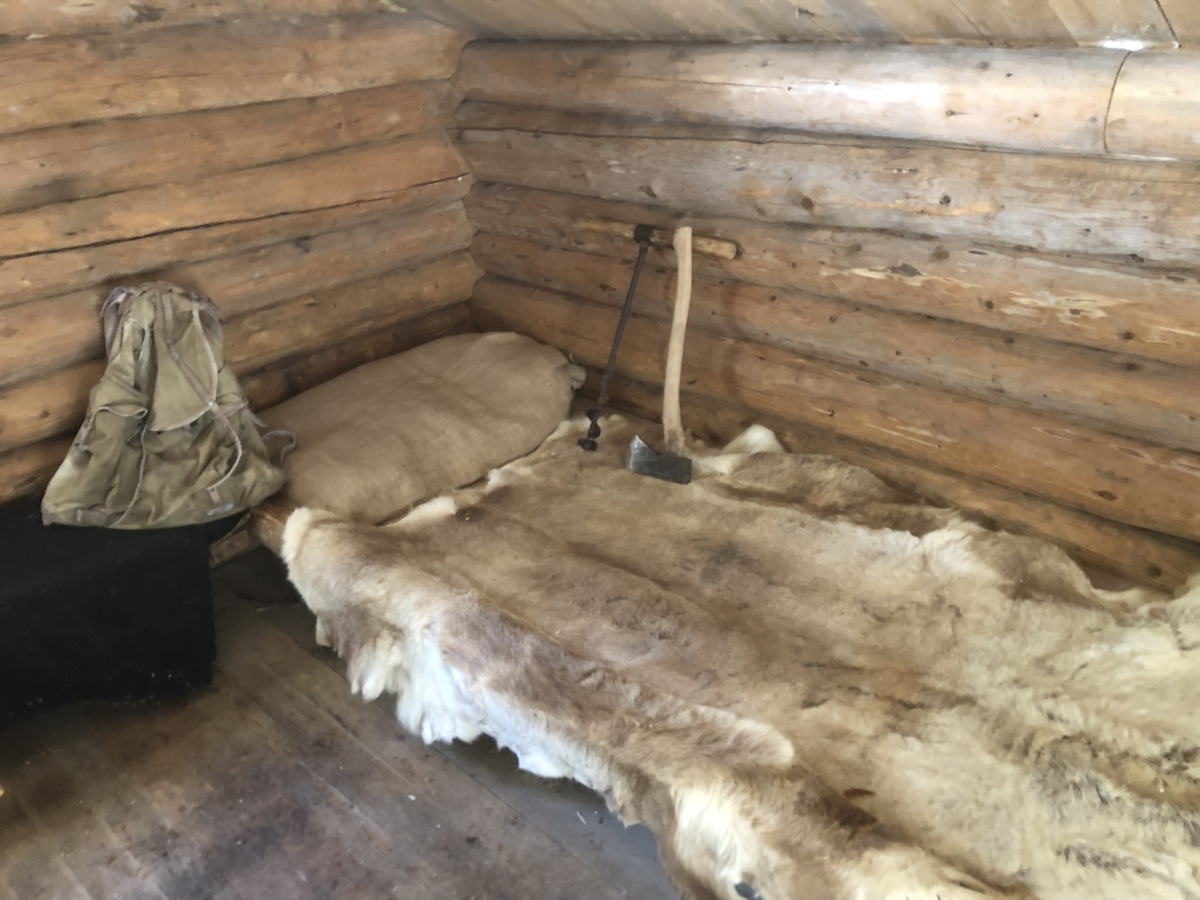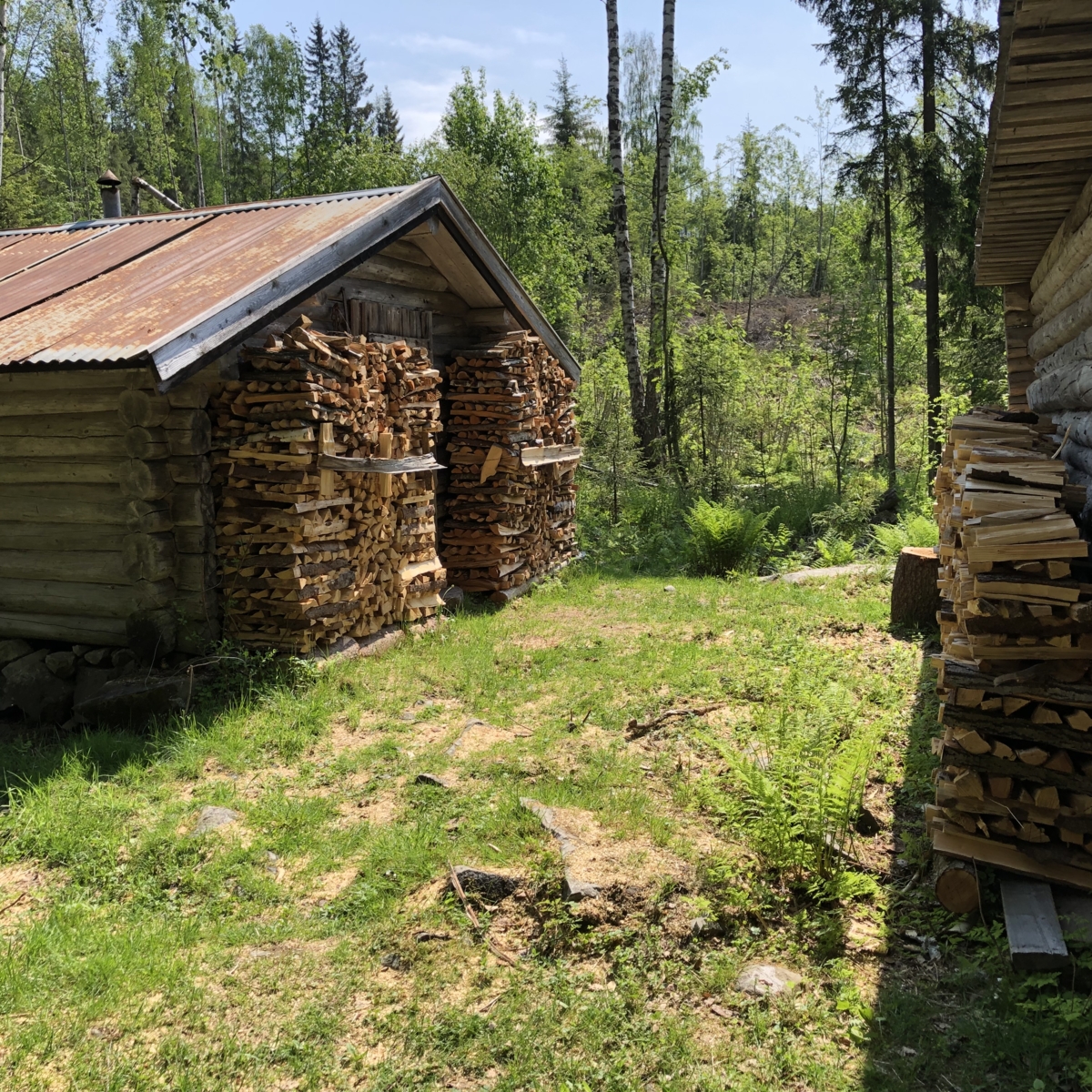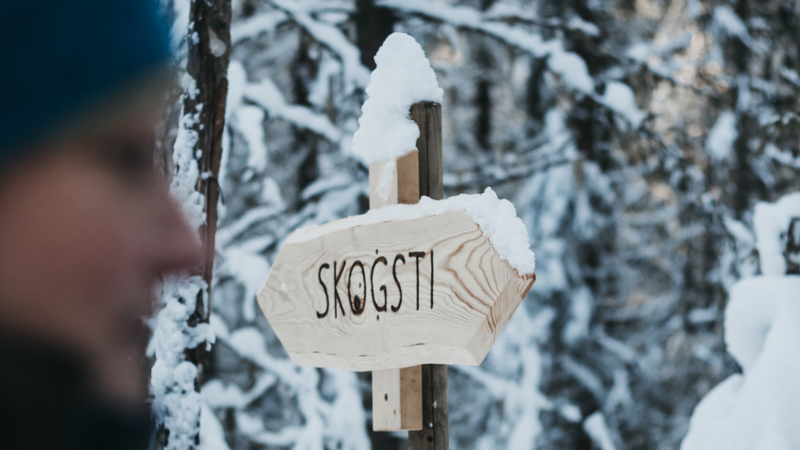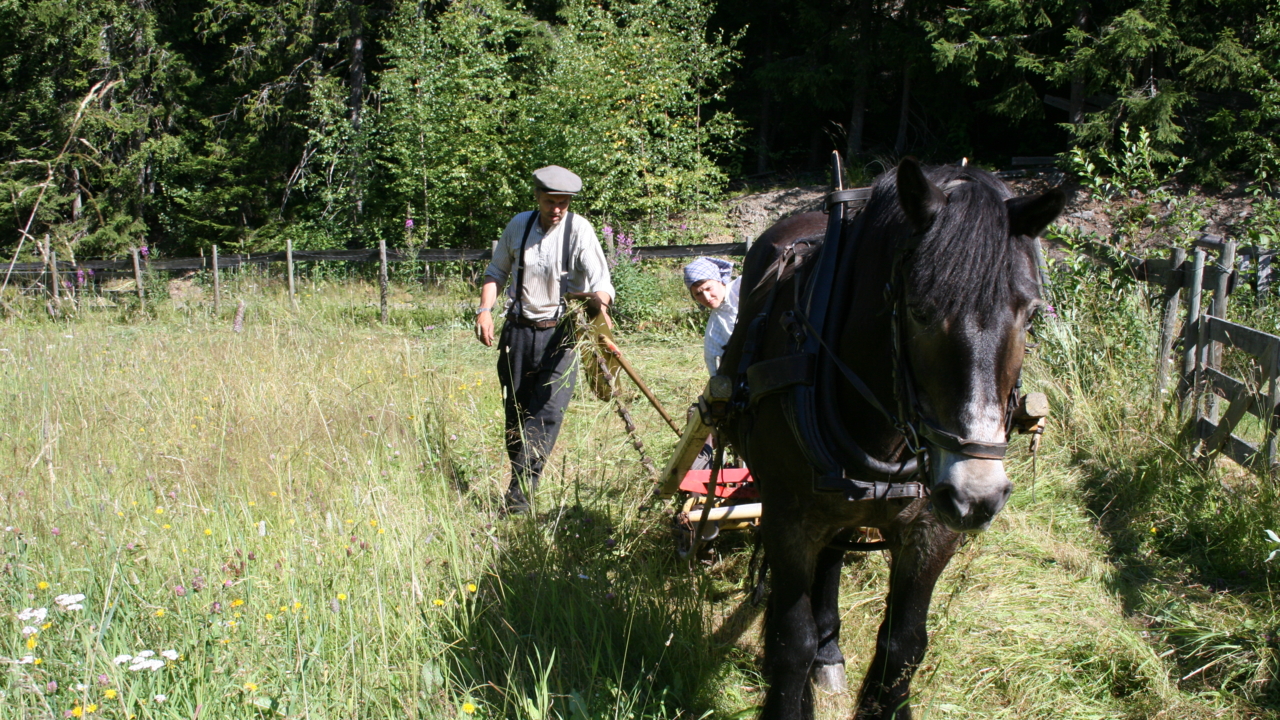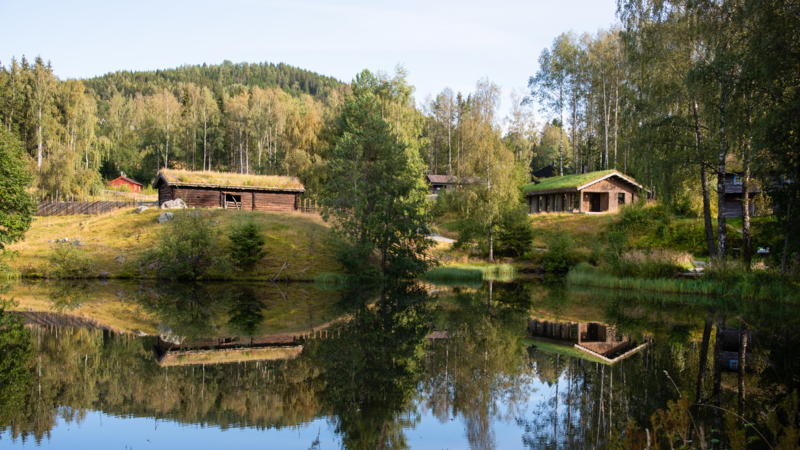
Photo: Runa Bjone
The 1890's forest at Maihaugen
The upper part of the open-air museum is now transformed into a forest area resembling how it would have looked in the 1890s.
The 1890s Forest and Forest Trail
- Forest area at the top of the open-air museum, above the summer farm area.
- There is a beautiful forest trail where you learn about the forest as a resource and workplace.
- Along the trail, there is a lean-to shelter built in the way loggers did in the past.
- The forest is thinned to resemble a logging forest in the 1890s.
- A total of 1000 cubic meters of timber will be harvested from the area
Thinning the Forest
The forest in this area had become too dense compared to its historical state. In collaboration with Mjøsen Skog, we are thinning this forest to showcase how forests looked in the early 1900s. Back then, it was common to selectively cut down trees suitable for logging. This meant that the largest and most valuable trees were harvested, while the rest remained standing.
The result was a diverse forest with trees of different ages and sizes, and the forest floor was abundant with blueberry bushes.
Forest Trail
You can walk through the 1890s forest on the beautiful forest trail created here. Along the way, you learn about the forest as a resource and workplace through information boards along the trail. Here, you will also find a lovely lean-to shelter, built in the old-fashioned way loggers constructed for overnight stays in the forest.
Over the next few years, a total of 1000 cubic meters of timber will be harvested from this forest. During the winter, the work is done with horses pulling the timber out of the forest, similar to how it was done in the past.
Around 40 acres will eventually resemble the logging forest from the 1890s. With a few years of nature's help, blueberry bushes will grow in the forest floor, providing a more accurate representation of how the forests appeared in the past. The goal is for this area to become a beautiful recreational space at Maihaugen and to tell an important story about forestry.
Forestry has Changed the Forest
We rarely find old-fashioned logging forests with a variety of tree species and sizes today. Modern forestry, with clear-cutting and replanting, is far more efficient. The trees in the forest become evenly aged and grow into dense, harvest-ready plots. The forest is, therefore, more productive, and the standing timber volume has more than tripled in the last 100 years.
The old-fashioned way of managing the forest is more gentle on biodiversity. Birds and other creatures may be displaced by clear-cutting, but they are preserved and thrive in the type of forest we are creating at Maihaugen."
Forest's gold
Forestry has been a significant industry in the inland areas, and the growth of the timber industry really took off in the second half of the 19th century. In 1870, timber accounted for over half of Norway's export revenues. In Fåberg and Lillehammer, many found employment in the forest, involved in log driving, at the steam sawmill, or at the cardboard factory. For farms, the forest became an important and reliable source of income..
The Forest Cabin from Turthaugen
The forest cabin and stable from Turthaugen were located at the innermost part of Gropmaka, close to Nevelfjell. It was built in 1936 and was used collectively by the farms Besserud, Simenrud, Nord Haave, Systuggun Haave, Søre Haave, and Ødegården. The cabin was used by forestry workers..

